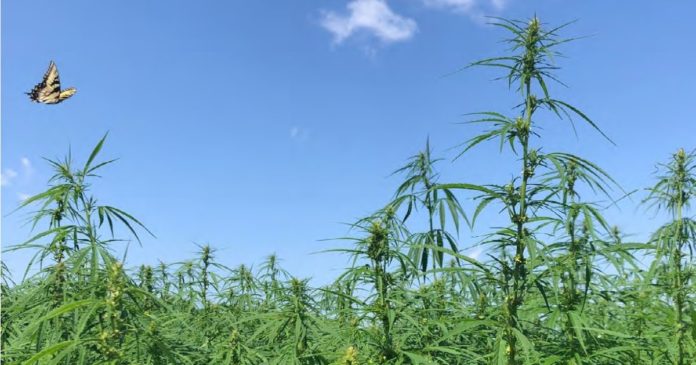A new report delves into fiber hemp production around the world, highlighting benefits and issues to help guide the industry to a sustainable future.
There’s a lot to be said for the potential of hemp fiber. Among its benefits are its durability, strength, anti-microbial properties, and resistance to UV, mold, mildew and rot. As a crop generally, there are also many positive attributes including hemp not usually requiring a lot of inputs compared to other fiber crops, it can be beneficial in terms of biodiversity, bees love it, and it can improve soil health.
In a report titled Growing Hemp for the Future: A Global Fiber Guide, Textile Exchange indicates the leading hemp fiber countries by volume are France, China, North Korea, Poland, and the United States. However, the organisation notes their leaderboard is based on incomplete data.
The report says 2021 fiber hemp production by volume was approximately the same level as in 1961, but grown on far less land with far greater efficiency, resulting in higher yields.
Among issues of concern identified by Textile Exchange are pesticides and fertiliser use. While the crop is hardy and resilient, insect hemp pests exist and this means chemicals may be needed to control them.
To date, biological agents have been the primary pesticides governments permit for use on fiber hemp, but this is starting to change. The report states highly hazardous pesticides have already been approved for use on hemp in some countries. In terms of fertiliser input, there is a lack of information to guide farmers.
“… without restrictions on which pesticides may be used or recommendations for minimal fertilizer applications and natural soil building practices, it could become another input-intensive crop resulting in the same extent of greenhouse gas emissions as well as pesticide and fertilizer contamination of the environment as represented by other natural fibers such as cotton.”
Textile Exchange sees a bright future for the crop, and the industry currently has an opportunity to shape its production system to be sustainable. Failure to do so may not only inflict further unnecessary environmental damage, but also see rebellion from consumers.
“… if the promise of hemp’s sustainability attributes starts to diminish, will the market still be interested in the fiber? Consumers and brands alike have been attracted to this fiber’s “natural” reputation could simply move on, looking for the next innovation to scale.”
Read more from Growing Hemp for the Future: A Global Fiber Guide.


